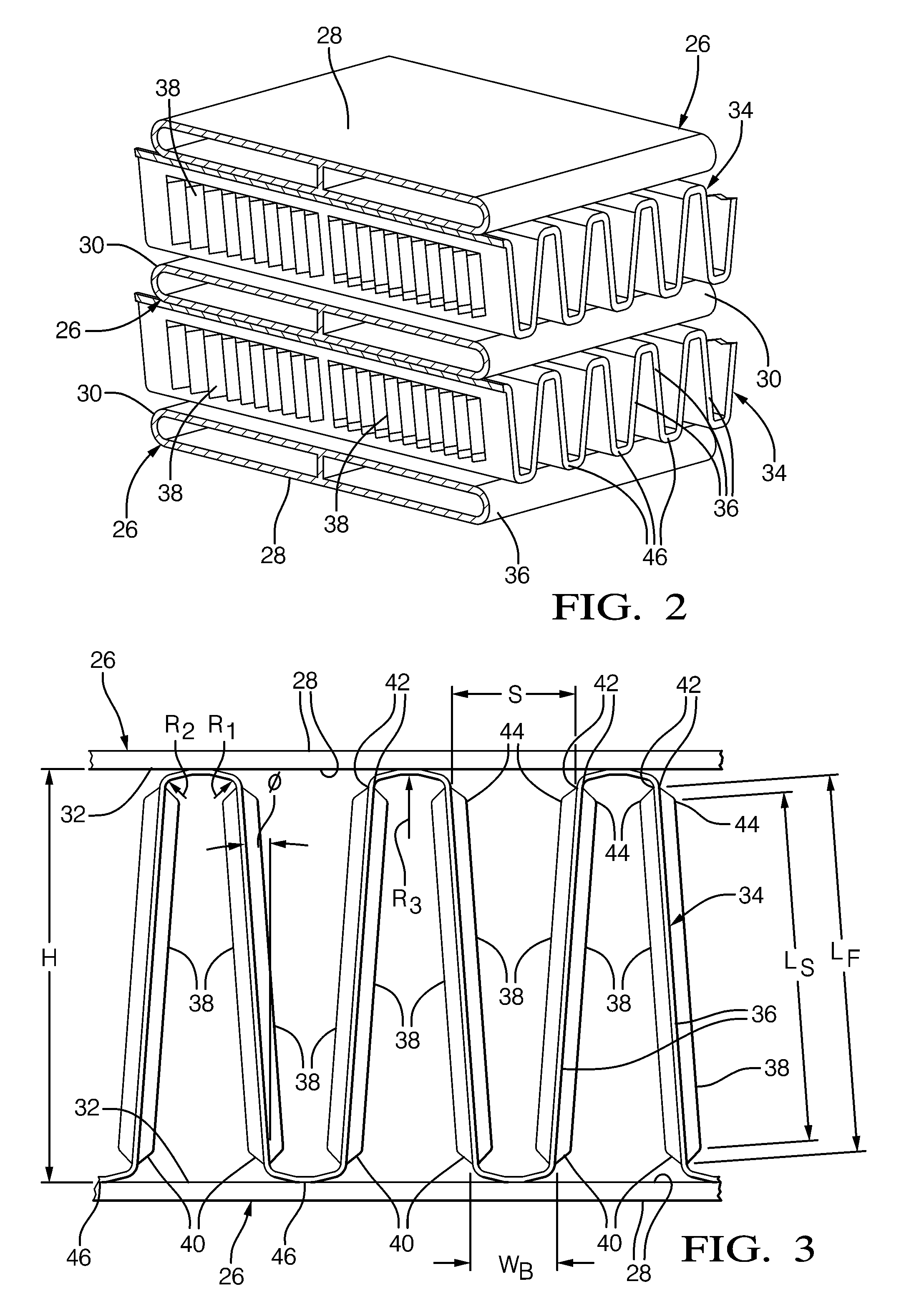Heat Exchanger Assembly
a technology of heat exchanger and assembly, which is applied in the direction of tubular elements, lighting and heating apparatus, and stationary conduit assemblies, etc., can solve the problems of negatively affecting the performance of the heat exchanger, and achieve the effect of avoiding pressure drop penalties, maximizing the length of the louvers, and preventing the legs from collapsing
- Summary
- Abstract
- Description
- Claims
- Application Information
AI Technical Summary
Benefits of technology
Problems solved by technology
Method used
Image
Examples
Embodiment Construction
[0014]Referring to the Figures, wherein like numerals indicate corresponding parts throughout the several views, a heat exchanger assembly 20 for transferring heat between a coolant and a flow of air is generally shown in FIG. 1. The heat exchanger assembly 20 has a number of uses, including but not limited to use as a: radiator, condenser, heater, evaporator, chiller or cooler.
[0015]The assembly includes a first manifold 22 and a second manifold 24 in spaced and parallel relationship with one another. A plurality of tubes 26, generally indicated in FIGS. 2 and 3, extend in spaced and parallel relationship with one another between the first and second manifolds 22, 24 for conveying the coolant between the first and second manifolds 22, 24. Each of the tubes 26 has a cross-section presenting flat sides 28 extending in a transverse direction interconnected by round ends 30. The flat sides 28 of adjacent tubes 26 are spaced from one another by a fin space 32.
[0016]A plurality of air fi...
PUM
 Login to View More
Login to View More Abstract
Description
Claims
Application Information
 Login to View More
Login to View More - R&D
- Intellectual Property
- Life Sciences
- Materials
- Tech Scout
- Unparalleled Data Quality
- Higher Quality Content
- 60% Fewer Hallucinations
Browse by: Latest US Patents, China's latest patents, Technical Efficacy Thesaurus, Application Domain, Technology Topic, Popular Technical Reports.
© 2025 PatSnap. All rights reserved.Legal|Privacy policy|Modern Slavery Act Transparency Statement|Sitemap|About US| Contact US: help@patsnap.com



